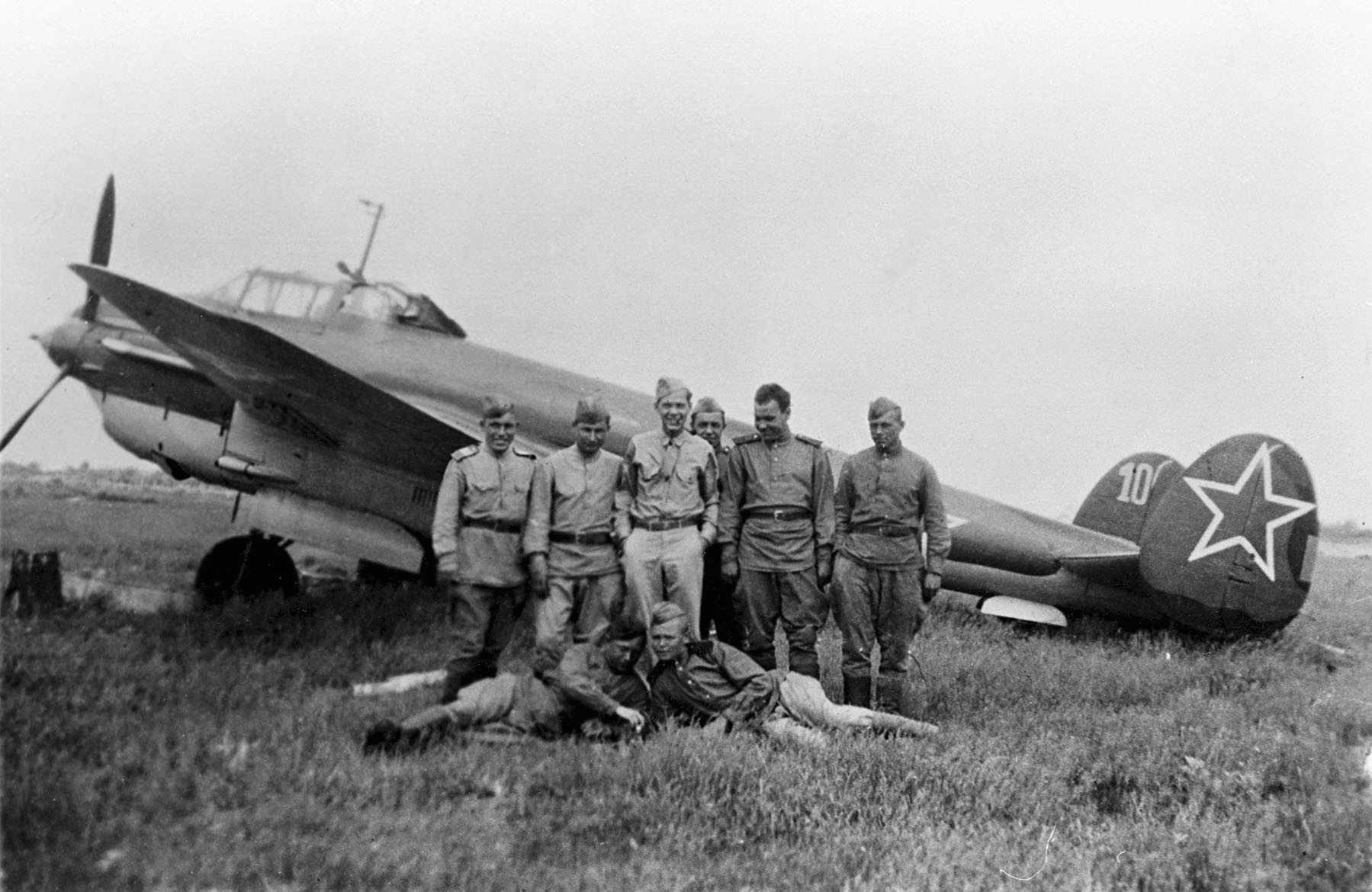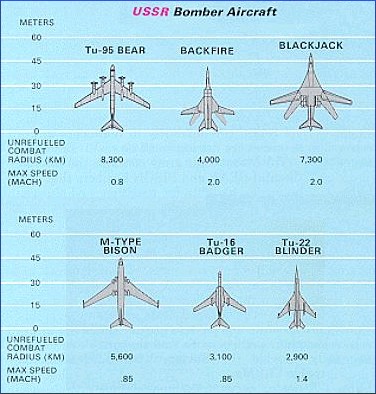|
Gneiss-2
Gneiss-2 was the first Soviet produced airborne radar system. It was introduced in 1942, and was installed on Petlyakov Pe-2, Petlyakov Pe-3 and Douglas A-20 Havoc aircraft . Development During the Soviet-Finnish War, the chief of the Air Force Research and Testing Institute, General S. A. Danilin, having gained experience of the ground-based Redoubt Radar Redox (RUS-2) under combat conditions, proposed developing an airborne radar system for detecting and attacking enemy aircraft regardless of visibility conditions. Scientists and engineers at the Leningrad Institute of Radio Industries confirmed the possibility of creating such a system, and under the leadership of A. B. Slepushkinthe development of the project, codenamed "Gneiss-1", was started. The Institute of Air Force put forward the following requirements: range of detection of the aircraft 4-5 km; detection zone in the horizontal plane 120 °, in the vertical - about 90 °. The transmitter was based on a klystron, working at ... [...More Info...] [...Related Items...] OR: [Wikipedia] [Google] [Baidu] |
Viktor Tikhomirov
Victor (or Viktor) Vasilievitch Tikhomirov (Dec. 10 (23), 1912 – Jan. 8, 1985) was an outstanding Soviet engineer and scientist in the fields of radio electronics and automation. He was a corresponding member of the Soviet Academy of Sciences, three times a laureate of the Stalin Prize, and was awarded two Orders of Lenin and other orders and medals. He led development of the first full radar system in the USSR. Early Background Victor Tikhomirov was born in Kineshma, a medium-sized city now in Ivanovo Oblast. Upon completing secondary school, he first worked as an electrician in the Donetz Basin (Donbass) region of Eastern Ukraine, and then at the Donbass mines of Metrostroi (the operator of Moscow's subway system). In 1934, he was admitted to study radio technology at the Moscow Power Engineering Institute (MPEI – also called Moscow Energy Institute) where he finished with distinction in 1940. The Higher Attestation Commission awarded him the Doctor of Engineering degree in F ... [...More Info...] [...Related Items...] OR: [Wikipedia] [Google] [Baidu] |
Petlyakov Pe-3
The Petlyakov Pe-3 was the long-range heavy fighter version of the successful Petlyakov Pe-2 high-speed dive bomber used by the Soviet Union during World War II. Its design and use followed a comparable path to those taken by the German Luftwaffe with the Junkers Ju 88 and the British Royal Air Force with the De Havilland Mosquito. The Soviets realized the need for a night fighter after the first night bombing of Moscow during Operation Barbarossa. The Petlyakov Pe-2 was selected for modification as the most suitable aircraft available. It was initially used for daylight ground attack missions during the Battle of Moscow, but this proved to be costly since the aircraft was unarmored. Armor and additional guns were retrofitted to the existing aircraft to make it more effective, but the evacuation of the sole factory building the Pe-3 in October 1941 limited the number of aircraft available and many units of the Soviet Air Forces flying the Pe-3 were either disbanded or converted ... [...More Info...] [...Related Items...] OR: [Wikipedia] [Google] [Baidu] |
Soviet Union
The Soviet Union,. officially the Union of Soviet Socialist Republics. (USSR),. was a transcontinental country that spanned much of Eurasia from 1922 to 1991. A flagship communist state, it was nominally a federal union of fifteen national republics; in practice, both its government and its economy were highly centralized until its final years. It was a one-party state governed by the Communist Party of the Soviet Union, with the city of Moscow serving as its capital as well as that of its largest and most populous republic: the Russian SFSR. Other major cities included Leningrad (Russian SFSR), Kiev (Ukrainian SSR), Minsk ( Byelorussian SSR), Tashkent (Uzbek SSR), Alma-Ata (Kazakh SSR), and Novosibirsk (Russian SFSR). It was the largest country in the world, covering over and spanning eleven time zones. The country's roots lay in the October Revolution of 1917, when the Bolsheviks, under the leadership of Vladimir Lenin, overthrew the Russian Provisional Government ... [...More Info...] [...Related Items...] OR: [Wikipedia] [Google] [Baidu] |
Petlyakov Pe-2
The Petlyakov Pe-2 (russian: Петляков Пе-2) was a Soviet twin-engine dive bomber used during World War II. One of the outstanding tactical attack aircraft of the war,Ethell 1996, p. 152. it also proved successful as a heavy fighter, as a night fighter ( Pe-3 variant) and as a reconnaissance aircraft.Angelucci and Matricardi 1978, p. 234. The Pe-2 was, numerically, the most important Soviet bomber of World War II, at their peak comprising 75% of the Soviet twin-engine bomber force.Smith 2003, pp. 155. The Soviets manufactured Pe-2s in greater numbers (11,430 built) during the war than any other twin-engine combat aircraft except for the German Junkers Ju 88 and the British Vickers Wellington.Guston 1980, p. 173. Several communist air forces flew the type after the war, when it became known by the NATO reporting name ''Buck''. Development In 1937, Vladimir Petlyakov was the leader of the Heavy Aircraft Brigade at the Tupolev OKB responsible for the development of the ANT-4 ... [...More Info...] [...Related Items...] OR: [Wikipedia] [Google] [Baidu] |
Douglas A-20 Havoc
The Douglas A-20 Havoc (company designation DB-7) is an American medium bomber, attack aircraft, Intruder (air combat), night intruder, night fighter, and reconnaissance aircraft of World War II. Designed to meet an Army Air Corps requirement for a bomber, it was ordered by France for their air force before the USAAC decided it would also meet their requirements. French DB-7s were the first to see combat; after the fall of France, the bomber served with the Royal Air Force under the British military aircraft designation systems#Names, service name Boston. From 1941, night fighter and Intruder (air combat), intruder versions were given the service name Havoc. In 1942 USAAF A-20s saw combat in North Africa. It served with several Allies of World War II, Allied air forces, principally the United States Army Air Forces (USAAF), the Soviet Air Forces (''VVS''), Soviet Naval Aviation (''AVMF''), and the Royal Air Force (RAF) of the United Kingdom. A total of 7,478 aircraft were built, ... [...More Info...] [...Related Items...] OR: [Wikipedia] [Google] [Baidu] |
Soviet-Finnish War
The Winter War,, sv, Vinterkriget, rus, Зи́мняя война́, r=Zimnyaya voyna. The names Soviet–Finnish War 1939–1940 (russian: link=no, Сове́тско-финская война́ 1939–1940) and Soviet–Finland War 1939–1940 (russian: link=no, Сове́тско-финляндская война́ 1939–1940) are often used in Russian historiographybr>В.Н. Барышников. От прохладного мира к Зимней войне. Восточная политика Финляндии в 1930–е годы. Санкт-Петербург, 1997.; О.Д. Дудорова. Неизвестные страницы Зимней войны. In: Военно-исторический журнал. 1991. №9.; Зимняя война 1939–1940. Книга первая. Политическая история. М., 1998. – ; ttp://www.otvaga2004.narod.ru/photo/winterwar/wwar1.htm М. Коломиец. Танки в Зимней войне 19 ... [...More Info...] [...Related Items...] OR: [Wikipedia] [Google] [Baidu] |
Great Patriotic War
The Eastern Front of World War II was a theatre of conflict between the European Axis powers against the Soviet Union (USSR), Poland and other Allies, which encompassed Central Europe, Eastern Europe, Northeast Europe (Baltics), and Southeast Europe (Balkans) from 22 June 1941 to 9 May 1945. It was known as the Great Patriotic War in the Soviet Union – and still is in some of its successor states, while almost everywhere else it has been called the ''Eastern Front''. In present-day German and Ukrainian historiography the name German-Soviet War is typically used. The battles on the Eastern Front of the Second World War constituted the largest military confrontation in history. They were characterised by unprecedented ferocity and brutality, wholesale destruction, mass deportations, and immense loss of life due to combat, starvation, exposure, disease, and massacres. Of the estimated 70–85 million deaths attributed to World War II, around 30 million occurred on th ... [...More Info...] [...Related Items...] OR: [Wikipedia] [Google] [Baidu] |
Long Range Aviation
Long-Range Aviation ( rus, Авиация Дальнего Действия, r=Aviatsiya dal'nego deystviya, abbr. to AДД, or ADD, and literally ''Aviation of Distant Action'') is a branch of the Russian Aerospace Forces responsible for delivering long-range nuclear or conventional strikes by aircraft rather than missiles. The branch was previously part of the Soviet Air Forces and Russian Air Force tasked with long-range bombardment of strategic targets with nuclear weapons. During the Cold War, it was the counterpart to the Strategic Air Command of the United States Air Force. Origins, 1936-1940 The first three Air Armies, designated Air Armies of Specific Purpose (or Particular Purpose) were created between 1936 and 1938. In accordance with the predominant Deep operations doctrine, the Red Army was reorganized into six echelons, of which the long-range aviation was the 1st echelon. The 2nd echelon consisted of: heavy tanks; the 3rd echelon: medium and light tanks; the 4 ... [...More Info...] [...Related Items...] OR: [Wikipedia] [Google] [Baidu] |
Russian And Soviet Military Radars
Russian(s) refers to anything related to Russia, including: *Russians (, ''russkiye''), an ethnic group of the East Slavic peoples, primarily living in Russia and neighboring countries *Rossiyane (), Russian language term for all citizens and people of Russia, regardless of ethnicity *Russophone, Russian-speaking person (, ''russkogovoryashchy'', ''russkoyazychny'') *Russian language, the most widely spoken of the Slavic languages *Russian alphabet *Russian cuisine *Russian culture *Russian studies Russian may also refer to: *Russian dressing *''The Russians'', a book by Hedrick Smith *Russian (comics), fictional Marvel Comics supervillain from ''The Punisher'' series *Russian (solitaire), a card game * "Russians" (song), from the album ''The Dream of the Blue Turtles'' by Sting *"Russian", from the album ''Tubular Bells 2003'' by Mike Oldfield *"Russian", from the album '' '' by Caravan Palace *Nik Russian, the perpetrator of a con committed in 2002 *The South African name for a ... [...More Info...] [...Related Items...] OR: [Wikipedia] [Google] [Baidu] |
World War II Radars
In its most general sense, the term "world" refers to the totality of entities, to the whole of reality or to everything that is. The nature of the world has been conceptualized differently in different fields. Some conceptions see the world as unique while others talk of a "plurality of worlds". Some treat the world as one simple object while others analyze the world as a complex made up of many parts. In ''scientific cosmology'' the world or universe is commonly defined as " e totality of all space and time; all that is, has been, and will be". '' Theories of modality'', on the other hand, talk of possible worlds as complete and consistent ways how things could have been. ''Phenomenology'', starting from the horizon of co-given objects present in the periphery of every experience, defines the world as the biggest horizon or the "horizon of all horizons". In ''philosophy of mind'', the world is commonly contrasted with the mind as that which is represented by the mind. ''Th ... [...More Info...] [...Related Items...] OR: [Wikipedia] [Google] [Baidu] |


.jpg)



